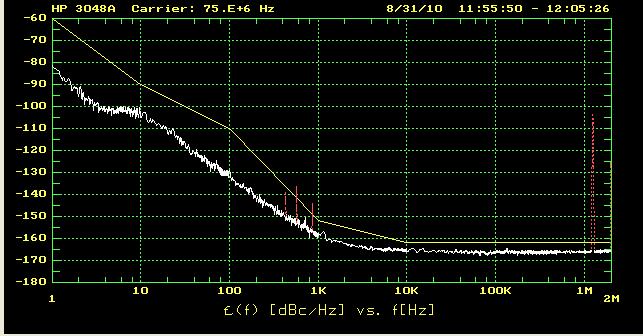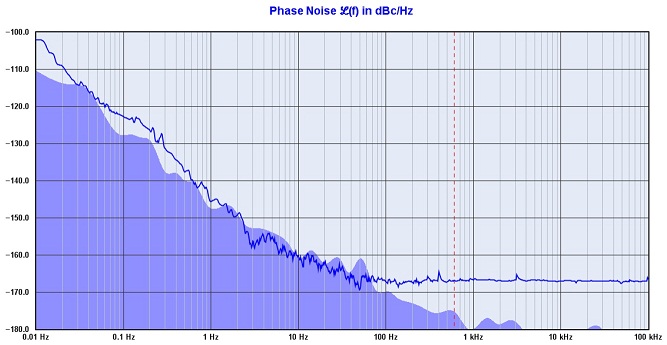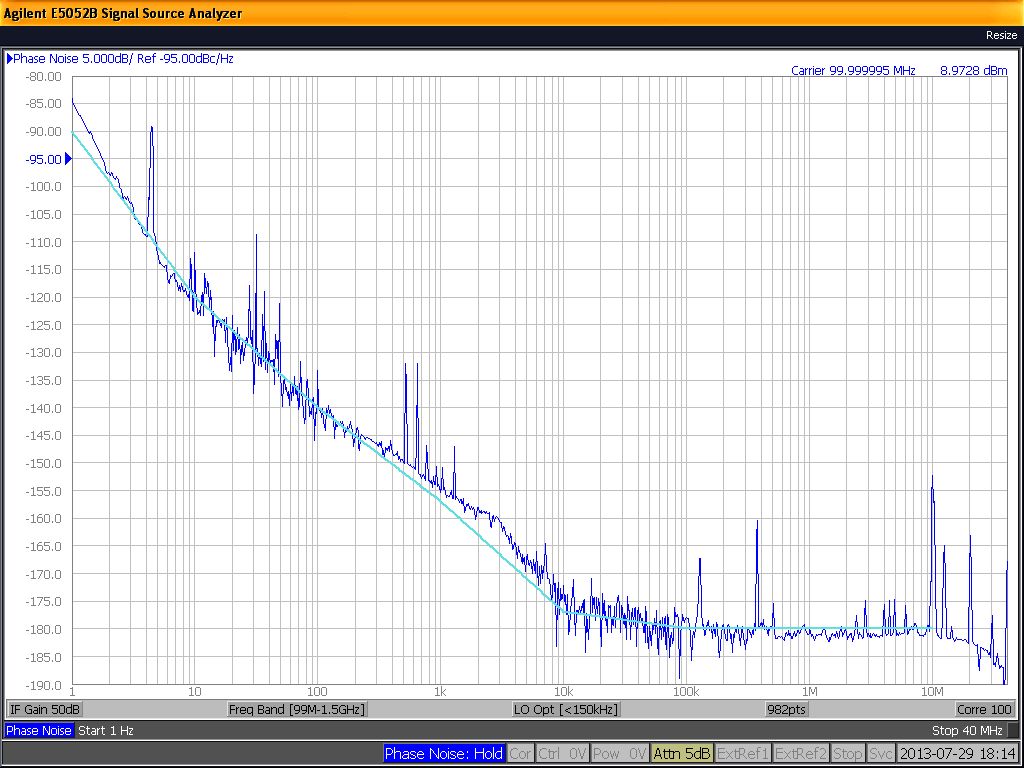Oscillators
Introduction
Precision Test Systems is increasingly becoming a world leader in ultra low phase noise (ULN) crystal and rubidium oscillators. We also have recently launached a new range of low G sensitive oscillators. For more information on our Low G range click here
The need for ULN crystal oscillators was initiated from our customers, asking for ULN options to our range of frequency standards and distribution amplifiers.
We now supply ULN oscillators, both as individual modules and options to our own products.
Up until now we have developed ULN oscillators covering the following frequencies:
5 MHz and 10 MHz
ULN oscillators at 5 MHz and 10 MHz are the easiest to manufacture. Below is a plot of a CFS10B frequency standard supplied to a satellite company. The frequency was 10 MHz.
Here we can see phase noise of -120 dBc/Hz at a 1 Hz offset with a -170 dBc/Hz floor noise.
Other Frequencies
It is much harder to achieve ultra low phase noise at other frequencies such as 80 MHz or 100 MHz. So what we do in these cases is lock a fundamental 100 MHz oscillator with average phase noise, to a ULN 10 MHz oscillator. The 10 MHz reference provides the 100 MHz accuracy and low ageing, while at the same time improving the phase noise of the 100 MHz oscillator, especially at close in offsets.
Below, shows another CFS10B frequency standard we supplied, this time with a 75 MHz output. Here we locked a 75 MHz oscillator to a 10 MHz ULN reference. The customers specification is shown by the yellow line. We easily beat this specifications as shown by the white trace. And, in fact, the plot below is of two of these oscillators. So the individual phase noise is up to 3 dB better than this.
This isn't the best that we can do, simply we met the customers specification goals. It's very important not to ask for more than you need. Low phase noise is a very expensive hobby!

100 MHz Oscillator
Below is the phase noise plot of a 100 MHz oscillator that was phase locked to our 10 MHz rubidium frequency standard.
| 100 MHz Oscillator Design | ||||||
| Phase Noise dBc/Hz @ Offset | 1 Hz | 10 Hz | 100 Hz | 1 kHz | 10 kHz |
Remarks |
| Customer's Specifications | -78 | -117 | -131 | -155 | -155 | |
| Specifications we supplied (see above) | -85 | -120 | -140 | -154 | -180 | |
| Theoretical Best Achievable | -100 | -130 | -155 | -165 | -180 | |
For the phase noise plot above, we lock a 100 MHz oscillator to a 10 MHz ULN oscillator in a normal analog phase lock loop.
The "theoretical best achievable" is a complicated combination of digital phase lock loops and multiple oscillators.
Currently, we meet the customers specifications.
The theoretical figures exceed the customers entire specifications, but at five to ten times the customers budget! This design is only for a quantity of one, and as it is a special design, costs to add up.
So something has to give, either the phase noise requirement or the budget.
The above is a typical scenario and often a design is a compromise between what the customer wants and what can be achieved, within the budget.
Multiple Outputs Often Required
Usually the customer wants multiple outputs of the ULN signal. This involves a distribution amplifier to isolate the required outputs and protect the loading on the main oscillator's output.
Obviously the distribution amplifier must have ultra low phase noise itself, otherwise the signal will be degraded.
Luckily we have developed our DA1-100-10 range. This is a distribution amplifier offering multiple outputs (up to 20 in a 1U rack size) each with excellent isolation from the other outputs (-90 dB typical) and a large reverse isolation figure (typically 130 dB) to protect the main oscillators output.
The plot below shows our DA1-100-10's phase noise. It can be seen the close in noise at an 1 Hz offset is 10 to 20 dB better than most ULN oscillators. The far out noise is about -170 dBc, again more than enough to meet the requirements of most projects.
The phase noise below is our standard product. It is possible to drop the 1 Hz noise to -140 dBc/Hz and the far out noise to -175 dBc/Hz if special attention is paid to gains, output levels etc.


